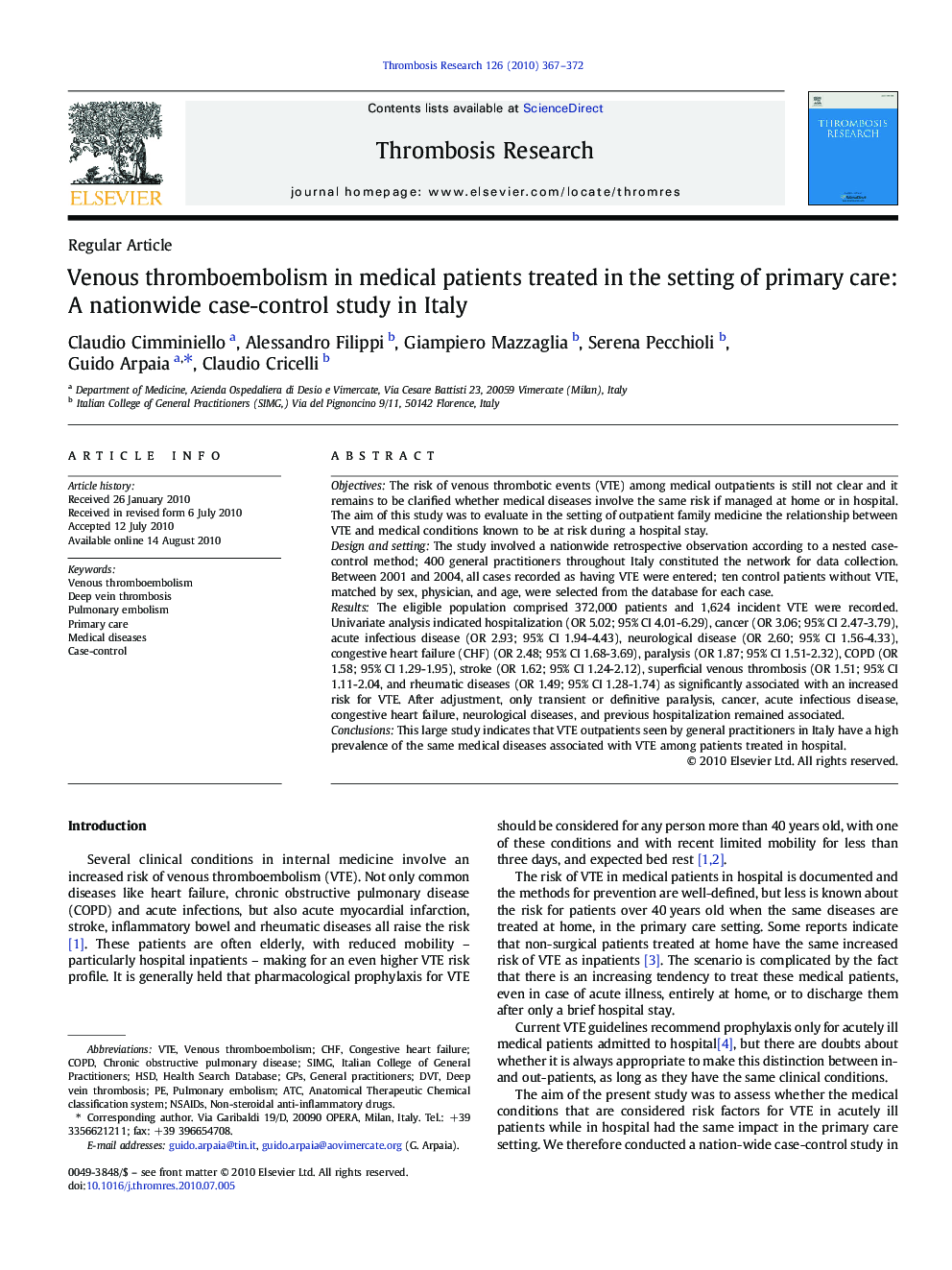| Article ID | Journal | Published Year | Pages | File Type |
|---|---|---|---|---|
| 3029176 | Thrombosis Research | 2010 | 6 Pages |
ObjectivesThe risk of venous thrombotic events (VTE) among medical outpatients is still not clear and it remains to be clarified whether medical diseases involve the same risk if managed at home or in hospital. The aim of this study was to evaluate in the setting of outpatient family medicine the relationship between VTE and medical conditions known to be at risk during a hospital stay.Design and settingThe study involved a nationwide retrospective observation according to a nested case-control method; 400 general practitioners throughout Italy constituted the network for data collection. Between 2001 and 2004, all cases recorded as having VTE were entered; ten control patients without VTE, matched by sex, physician, and age, were selected from the database for each case.ResultsThe eligible population comprised 372,000 patients and 1,624 incident VTE were recorded. Univariate analysis indicated hospitalization (OR 5.02; 95% CI 4.01-6.29), cancer (OR 3.06; 95% CI 2.47-3.79), acute infectious disease (OR 2.93; 95% CI 1.94-4.43), neurological disease (OR 2.60; 95% CI 1.56-4.33), congestive heart failure (CHF) (OR 2.48; 95% CI 1.68-3.69), paralysis (OR 1.87; 95% CI 1.51-2.32), COPD (OR 1.58; 95% CI 1.29-1.95), stroke (OR 1.62; 95% CI 1.24-2.12), superficial venous thrombosis (OR 1.51; 95% CI 1.11-2.04, and rheumatic diseases (OR 1.49; 95% CI 1.28-1.74) as significantly associated with an increased risk for VTE. After adjustment, only transient or definitive paralysis, cancer, acute infectious disease, congestive heart failure, neurological diseases, and previous hospitalization remained associated.ConclusionsThis large study indicates that VTE outpatients seen by general practitioners in Italy have a high prevalence of the same medical diseases associated with VTE among patients treated in hospital.
